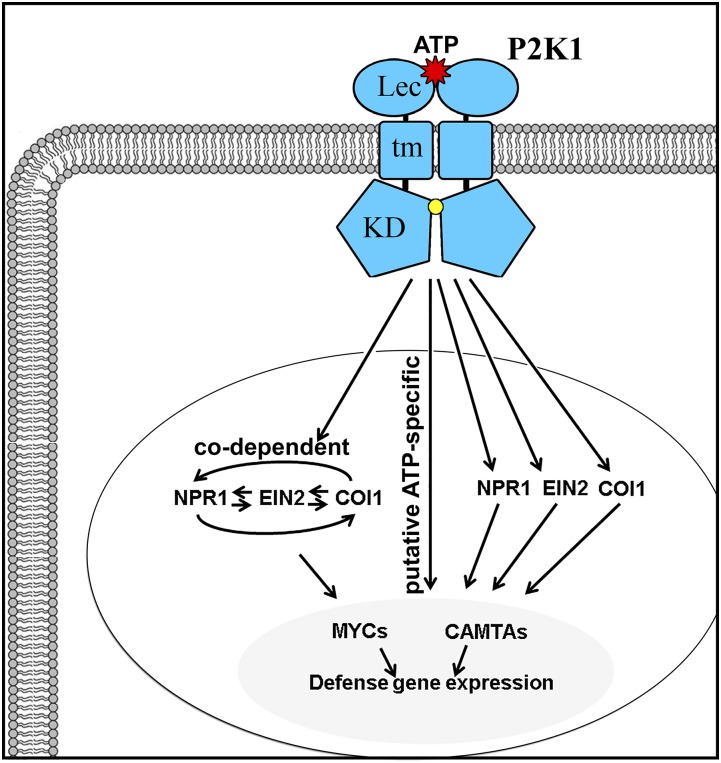Figure 10.
Proposed model of extracellular ATP signaling pathway to the defense-related transcriptome. Once extracellular ATP binds to the P2K1 receptor on the plasma membrane, which induces the autophosphorylation of the receptor and transphosphorylation of downstream targets (Chen et al., 2017), the activated P2K1 receptor results in transcriptional reprogramming of 542 genes. More than half of the ATP-responsive genes required signaling by one or more of the pathways through EIN2, NPR1, and COI1, for example, 154 genes in the COI1-dependent pathway, 21 genes in the NPR1-dependent pathway, six genes in the EIN2-dependent pathway, and 129 genes in the codependent signaling pathway. The other half of the ATP-responsive genes (233 genes) are independent of COI1/NPR1/EIN2-mediated pathways, the putative ATP-specific pathway. Many of the ATP-responsive genes are regulated under the participation of MYC and CAMTA transcription factors. KD, Kinase domain; Lec, lectin domain; tm, transmembrane domain.

